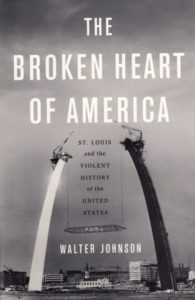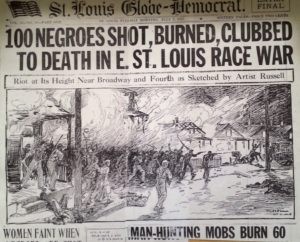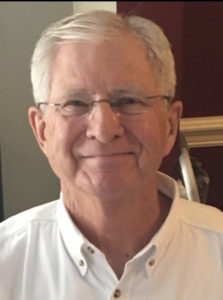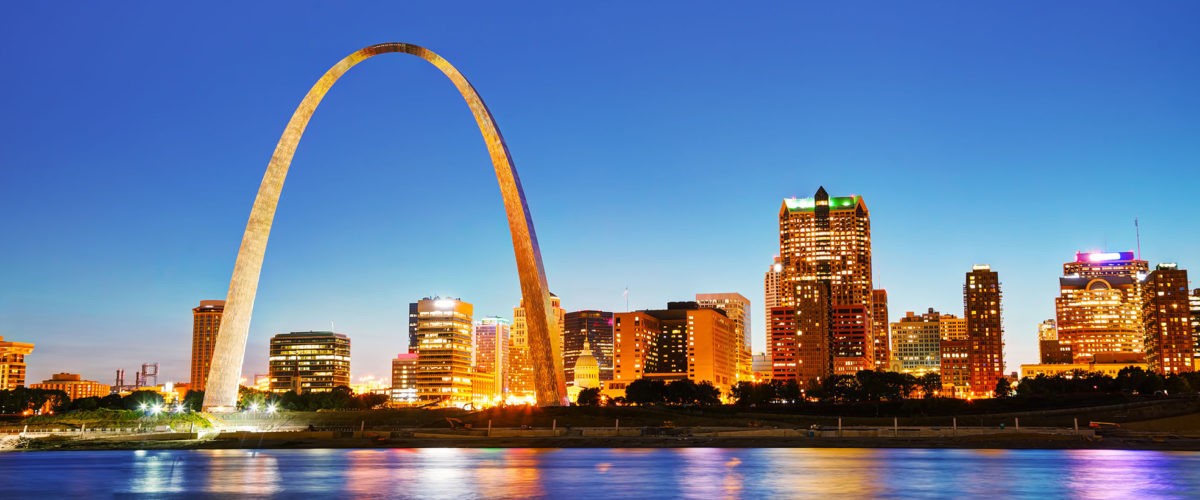I’ll admit that I have followed his rule on book reviews and thus I will refrain once again from recommending The Broken Heart of America as a “must” for every reader.
 On the other hand, I can say that I wish every honors high school social studies class and every college curriculum required this book — and that every seminary student and all in practice of ministry would give it a careful read. My high recommendation does not include everyone. If you hold a master of public policy degree, this book covers what you already should know and you can skip it.
On the other hand, I can say that I wish every honors high school social studies class and every college curriculum required this book — and that every seminary student and all in practice of ministry would give it a careful read. My high recommendation does not include everyone. If you hold a master of public policy degree, this book covers what you already should know and you can skip it.
Walter Johnson, who teaches history at Harvard, is a native Missourian who grew up with white privilege and did not know it. Most of us had to grow into an awareness of white privilege. Broken Heart will grab you for a full immersion in white privilege awareness — if you will permit a term that reveals my baptist heritage (small ‘b’ intended). In this book you will not be lightly sprinkled with the story of America that began as a “white man’s country” and that has ruthlessly applied racist capitalism every step of the journey. No, this is the full immersion out of which you can never hope to see America the same way again.

Walter Johnson
Johnson tells the story of America primarily through the lens of one city, St. Louis. I was born in St. Louis and grew up in white privilege just 30 miles downriver. So almost every street and many of the names and places are ones I recall. But it is not necessary to know anything about St. Louis to find Broken Heart compelling. You will know different names and streets, but you will see in your city the same forces of evil that broke St. Louis and continue to break America’s heart. The flyleaf says that this book “will forever change how we think about the United States.” You can count on that promise. A full immersion awaits.
Beginning with Lewis and Clark
The first half of Johnson’s project takes us on a journey from Lewis and Clark headed up the Missouri River to the end of the Civil War. Many of us think we know this history, and indeed it is standard fare in our schooling and in the PBS specials we watch. We know that the big impediment to empire, beyond the mountains and distances, was the Native population. We know this story. Nonetheless, it is gripping to hear our beginnings through Johnson’s lens of “white man’s country” and racist capitalism.
There is a long thread that connects then to now. Johnson wants us to experience the whole cloth, wants us to see the links and the continuity of racist capitalism so we cannot forget that Ferguson and New York and Minneapolis and Portland didn’t just happen out of the blue. Each city is a thread that runs back, connecting us to the earliest moments of empire.
“We cannot forget that Ferguson and New York and Minneapolis and Portland didn’t just happen out of the blue.”
When Johnson tells of Indian mothers tying their babies to dogs and sending them out of the village to escape the marching soldiers of white empire — and of the soldiers killing the babies anyway when the animals finally return home after the village is destroyed — we can connect the threads all the way to George Floyd. This is a tough read. Unchecked white supremacy and racist capitalism will do anything to amass, hold and extend power and wealth. Now you know the basic thesis of this project.
Fortunes made in St. Louis
The second half of this book, the years between the Civil War and Gulf Wars, details how racist capitalism lifted St. Louis to the third-largest metropolitan area in the United States and immense (restricted) wealth before its slow and steady decline in population and opportunity. Fortunes were made in St. Louis in the 19th and 20th centuries, but it was money of empire; it was money created by cheap labor and a very careful exclusion of an entire population of Black America.
 The July 1917 massacre in East St. Louis is vividly portrayed, giving us a vision of earthly hell after fearful white workers unleashed their fury and anger. We see the Cahokia Creek clogged with the victims; bodies hanging from lampposts; Black residents of East St. Louis dead in the streets, some with their hands above their heads; hundreds of buildings and houses smoldering the morning of the Fourth of July. No one really knows how many perished or how many simply fled in the night, but the homeless numbered at least 6,000.
The July 1917 massacre in East St. Louis is vividly portrayed, giving us a vision of earthly hell after fearful white workers unleashed their fury and anger. We see the Cahokia Creek clogged with the victims; bodies hanging from lampposts; Black residents of East St. Louis dead in the streets, some with their hands above their heads; hundreds of buildings and houses smoldering the morning of the Fourth of July. No one really knows how many perished or how many simply fled in the night, but the homeless numbered at least 6,000.
Empire knows how important it is to keep the white working poor in anger. Later in the book Johnson highlights how that anger was fueled by Pat Buchanan, editor of one of the St. Louis papers; Phyllis Schlafly, prominent voice for gender repression; and John Stormer (None Dare Call it Treason) among others. One can almost draw a straight line from St. Louis to the Trump White House.
St. Louis gave us the voices of warning: There are enemies everywhere, maybe even next door to you. Your threat is your neighbor who plots to destroy America.
How funding never gets where it is intended
It is in the second half of the book that Johnson brings his analytical skills to bear on how it is possible that millions of dollars created to help Black populations never seem to end up helping anyone but the institutions and agencies designated to provide change. I did not understand every piece of this portrayal of corporate and institutional theft, but I got the big picture. It’s like watching a football game. You cannot possibly see every move, fake or block when 22 people are all running at the same time. But you can see if the ball is moving forward for a touchdown.
“In the white empire, revenue funds (are) created by municipal fines — by pulling over Black drivers or by apprehending Black pedestrians who are jaywalking.”
Here is one example: A business moves to an area designated for renewal with help from Tax-Increment Financing monies that are created by selling municipal bonds. If all goes well, the business makes money and the bonds are paid on schedule. But if the business fails to make money, the municipality is on the hook to cover the bonds. How does the city in hock pay? In the white empire, revenue funds created by municipal fines — by pulling over Black drivers or by apprehending Black pedestrians who are jaywalking.
A great example of this genius for getting Blacks to pay for white empire is Ferguson, Mo. A whopping 20% of the city revenue — or in simple numbers, $2,635,00 in 2013 — was generated by fines. This is empire at its best. A mostly white police force works on a quota system to raise money for business through racist capitalism. But it gets even better (or worse!). Ferguson bought new police cars, new weapons, a new fire station, renovated the police station and then gave a nice 8% raise to its municipal workers — most of whom worked for the police department. Over and over, Broken Heart exposes how empire takes from those least able, how empire exacts wealth from the very people already pushed to the limit of economic survival.
Again, the case of St Louis: Emerson Electric in Ferguson operates a new $50 million solar-powered data center. Somehow Emerson manages to show that their facility is worth nearly zero. Now watch: Emerson pays $68,000 in property tax in 2014 on 152 acres of tax base. Walter Johnson notes at this point that $68,000 won’t even pay the salary of the judge in Ferguson who hands out arrest warrants. Those who suffer worst in this scenario are Black children in the failing public schools.
Block grants, TIF monies, public housing — all the tools designed and intended to lift and empower— end up doing exactly the opposite of their intended purpose. Of course, you will need a state government to help with tax laws, and St. Louis has one of the most regressive state governments ever conceived for the empire to function as a well-oiled machine.
“St. Louis is broken in the heart. It has left behind its Black population in the name of white empire and racist capitalism.”
St. Louis is no longer the third-largest metropolitan area in the U.S. It is not even the largest city in Missouri. The city has beautiful, wealthy suburbs to the west. And yes, it’s the best baseball city in the world. Professional soccer is soon coming, and a new stadium is in the works. The soccer news release says: “One City, rising together.” Too bad those words have not been the guiding principle for every American city.
St. Louis is broken in the heart. It has left behind its Black population in the name of white empire and racist capitalism. When comedian Dick Gregory was growing up in St. Louis, he joined the track team so he could have a shower every day. Imagine.
Hope from a broken heart
If you read The Broken Heart of America, don’t skip the epilogue. It is here that Walter Johnson takes off his scholarly hat and speaks to us from his heart. He writes: “And yet I have never been to a more amazing, hopeful place in my life.”
I wasn’t expecting that. In the middle of this city with a broken heart, people are making a difference. None of them are famous people or hold office. They are people who do the grunt work in neighborhoods.
They are the modern heroes, not much different from the Black women in 1933 who went on strike for better wages at Funsten Nut in St. Louis. With absolutely no support and led by an 18-year veteran of the company (Carrie Smith) with a Bible in one hand and a brick in the other hand, these women prevailed.
My favorite example of amazing and hopeful in St. Louis today is a neighborhood that has a “books and breakfast” program where white and Black people come together for food, fellowship and free books. People call it the “Love Bank” — a place where you go and withdraw a little love.
I almost skipped the acknowledgements at the end since generally they offer a litany of names with which I have no connection. I’m glad I didn’t stop reading. For here Walter Johnson gives thanks to a Jonathan Walton, who introduced the writer to Micah 6:8. Johnson used this Scripture to guide him through the city, and it continues to guide his life. He has showed you, O mortal, what is good; and what does the Lord require of you but to do justice, and to love kindness, and to walk humbly with your God?

Tom Clifton
Thomas E. Clifton is a retired American Baptist minister and former president of Central Baptist Theological Seminary. He lives in Pittsburgh but still loves the St. Louis Cardinals.


